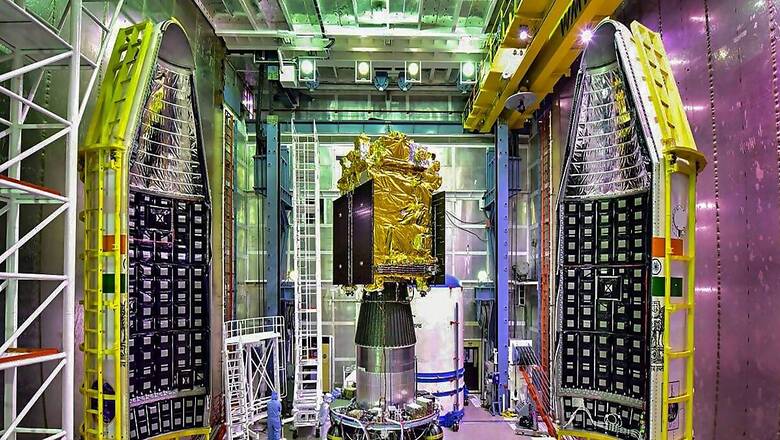
views
India is gearing up for the launch of the Aditya-L1 mission, which will travel 1.5 million kilometres to study the Sun. This is a collaboration between the Indian Space Research Organisation (ISRO) and several other esteemed institutions.
The mission is aimed at finding new information about the earth’s closest start over the course of five years.
“Aditya-L1 mission is going to undertake a 15-lakh kilometre long journey. After reaching a point, with the help of the 7 instruments, our country is going to study the Sun over a period of the next 5 years,” said Raghunandan Kumar, Director at the Planetary Society.
India’s first mission to the sun is scheduled for a launch on September 2. Aditya-L1 will be placed in an orbit around the Lagrange point, which is also called L1. This is a point of the Sun-Earth system, where the gravitational effects from both sides cancel out each other. The mission’s aim is to observe — in real-time — solar activities and their effects on space weather.
The instruments and systems are minutely designed for studying crucial data about the sun and also capture its images. The main payload is essentially crafted by the Indian Institute of Astrophysics.
Director of Space Applications Centre (SAC/ISRO) in Ahmedabad, Nilesh Desai highlighted the key point of the mission saying that the payloads were not only made by the Indian Institute of Astrophysics but other small institutes were also brought in to deliver six other payloads. “This is the uniqueness of this particular mission,” a Hindustan Times report quoted Desai as saying.
The mission is expected to take about four months to reach the designated L1 point, following which the spacecraft will begin its in-depth study of the Sun.
The tools on board will provide us with a vast range of data, including insights into the Sun’s magnetic field, its outermost layer, the corona and its emissions.
Giving an update on its Aditya-L1 mission, the ISRO said that the launch rehearsal and the rocket’s internal checks have been completed on Wednesday.
The spacecraft — the first space-based Indian observatory to study the Sun — would be launched by PSLV-C57 rocket.
(With inputs from PTI)
















Comments
0 comment